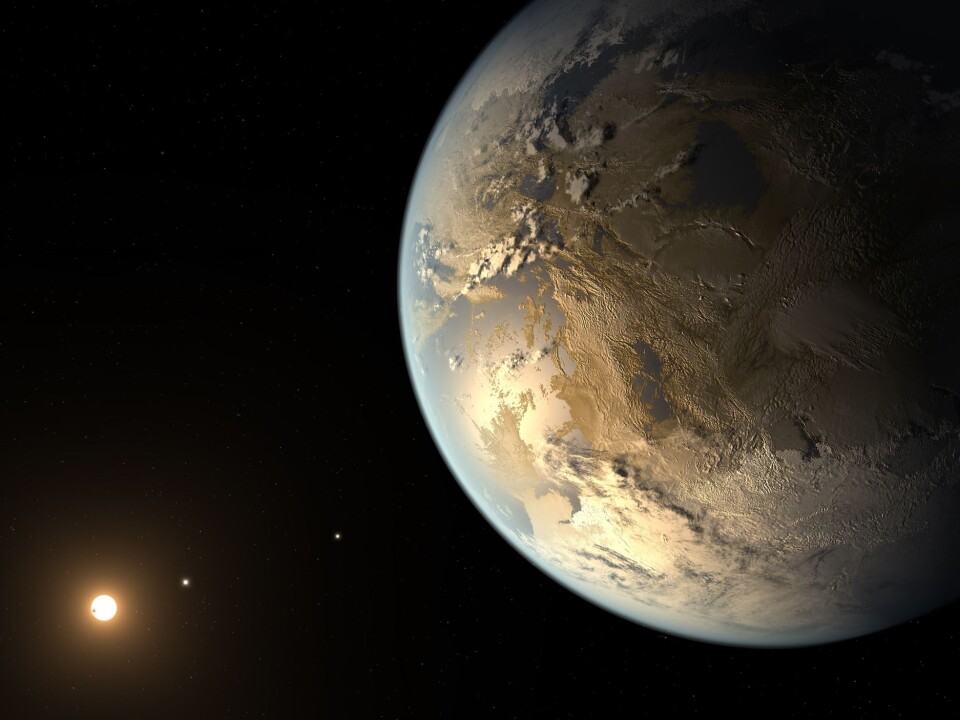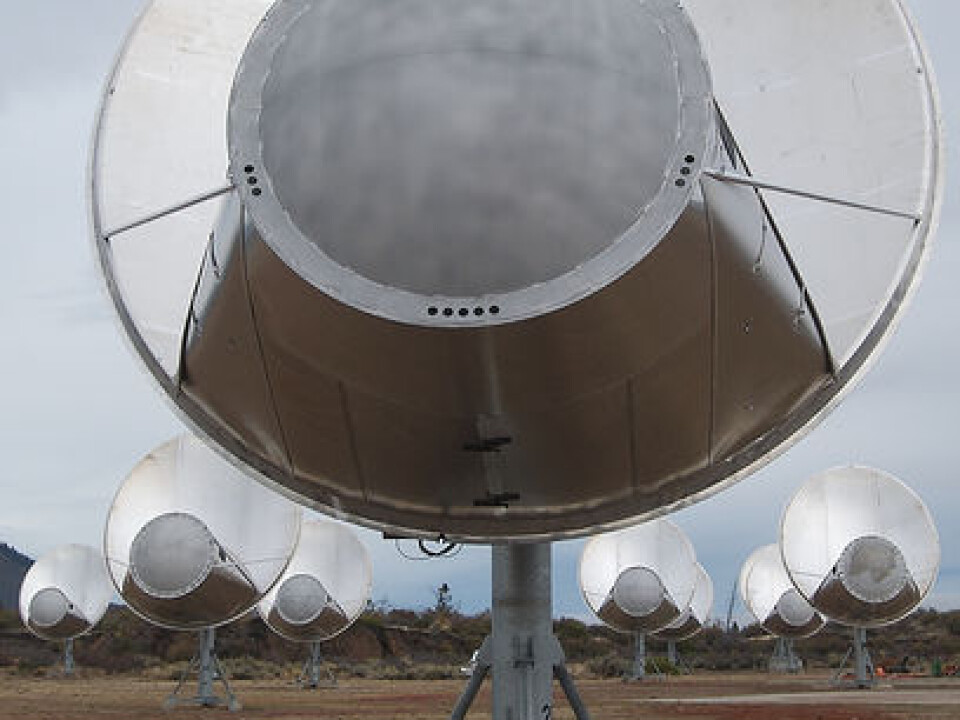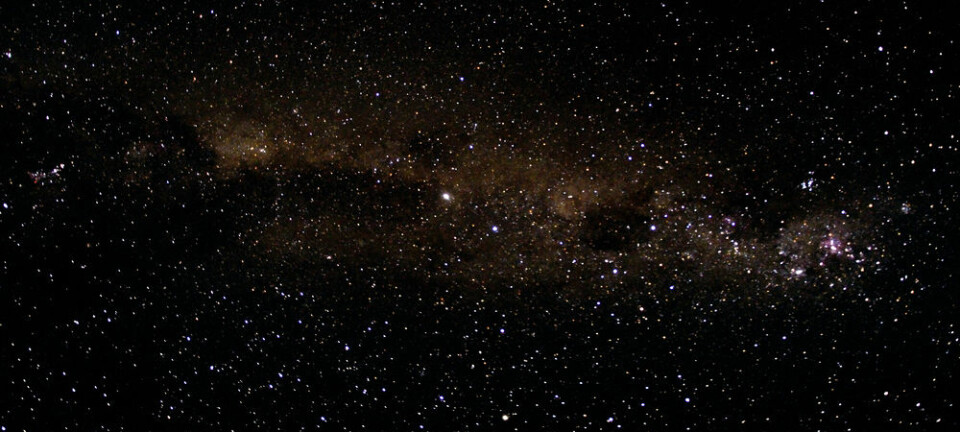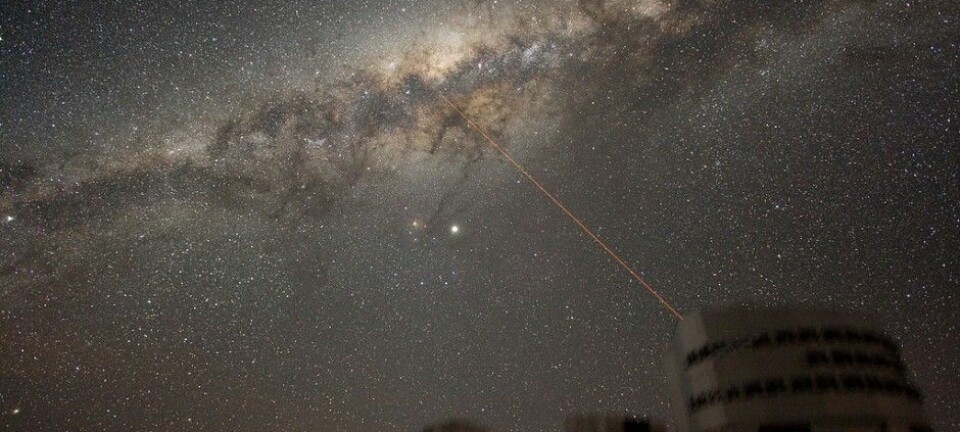
Scientist: We could find intelligent life in space within two decades
For the first time in human history, we have both the knowledge and the technology to search for alien life. And we may find it as early as the middle of this century.
So far as we know, our small planet is the only place in the universe to house thinking beings.
But this idea may be turned on its head as early as the middle of this century, as scientists up their efforts to search for intelligent life. If they are successful, then they will prove that Homo sapiens is just one of countless sentient species in the universe.
The idea of life in space is hardly new – even the classical Greeks were intrigued by the idea that unseen beings might populate the sky. What is new is our ability to detect the possibly subtle evidence for biology on other worlds. And while no one can guarantee success in these experiments, those involved in this effort think we will find something within a generation, including NASA’s chief scientist.
Ours may be the first generation to learn that Earth is not so special after all.

Read More: Gravitational-wave astronomy will change our understanding of the universe
Life could be found in extreme conditions
Some of the optimism derives from the discovery of life forms – extremophiles – existing in harsh environments on our own planet.
They thrive in conditions that could mirror the situation on a half-dozen nearby moons and planets, including Mars and several of the moons of Jupiter and Saturn.
If such biology can exist here, it could exist there. Simple life could be only a rocket ride away.

Intelligent life – creatures with the reasoning ability of humans – may require conditions that are less harsh, and therefore less common. But in the last two decades astronomers have shown that the amount of habitable real estate in the cosmos is so vast, even the type of environments that could nurture sophisticated life will be numerous.
Read More: Are all your worries about Artificial Intelligence wrong?
Possibly one billion earth-like planets in our galaxy
Consider the numbers: Two-dozen years ago, no one could say with confidence whether planets around stars were plentiful or rare. Today, we know that there are a trillion planets in the Milky Way.
Even if only one in a thousand of these is a cousin of the Earth – a world with a thick atmosphere and liquid oceans – that would still leave a billion such planets. Unless life and its evolution to thinking beings is a miracle, we should, like the Greeks, expect company among the stars.
These recent results from astronomical research have invigorated the modern attempts to find biology in space. By far, the overwhelming majority of the funding and effort is directed to robotic (and eventually human) exploration of the solar system.
Could there be the remains of microbial life under the sands of Mars or perhaps in the hidden oceans of moons such as Saturn’s Enceladus or Jupiter’s Europa? Space agencies world-wide are pursuing these questions.
A far smaller (and privately funded) effort is hoping to detect clever life, life at least as technically accomplished as Homo sapiens.
Known by the acronym SETI (the Search for Extra-terrestrial Intelligence), these experiments had their beginnings in 1960 when American astronomer Frank Drake spent several weeks pointing a large radio antenna in the directions of two relatively nearby stars. He hoped to pick up radio signals from the inhabitants of planets that might exist in these stellar systems.
Read More: ScienceNordic teams up with Science and Cocktails
SETI should be able to detect intelligent life
SETI is hardly the first time that someone has tried to establish the existence of cosmic company.
In the 19th century, there were European schemes to signal intelligent beings that were assumed to populate Mars, and as the 20th century dawned, many people believed the claims by both Italian and American astronomers that the Red Planet was crisscrossed by canals, which were clearly the work of commercially minded inhabitants.
But by the time of Frank Drake’s experiment, we knew that there weren’t any nearby worlds with the conditions that would support the complex biology that is a precursor to a big-brained species such as ourselves.
If there are aliens that can dig a network of canals – aliens of the type that routinely appear in movies and television – they inhabit other star systems – places we cannot visit. SETI is a way to prove their existence, and it is both feasible and promising.
A simple calculation shows that with radio or laser technology that’s not much different than our own, it’s possible to send messages from one star system to another. If humans can do this, a mere century after Italian physicist Guglielmo Marconi developed practical radio, then presumably there are others who can as well.
Read More: Meet Earth's twin planet
SETI has only searched 1,000 worlds
But if SETI searches seem reasonable, why, after more than a half-century of effort, has no confirmed signal from another world ever been observed?
An easy and quite reasonable response it that, given the very small scope of this effort, not enough data have been collected to book a success.
Only a few thousand star systems have been examined carefully over a wide range of radio frequencies, and even fewer have been searched for the very brief laser flashes that some hypothesise would also be an effective signalling strategy.
In other words, although the ideas of SETI are old, we have simply not yet looked at enough of the sky to rule out the presence of sophisticated inhabitants elsewhere.
Read More: Are aliens really trying to contact us?
The search is about to speed up
This situation is being remedied. The SETI Institute, in California’s Silicon Valley, is building new, digital radio receivers that could, in principle speed up its on-going reconnaissance for signals by a factor of 100-fold or more.
Another experiment, Breakthrough Listen, conducted by SETI researchers at the University of California, Berkeley, is renting time on very large antennas normally used for radio astronomical research to press its hunt for signals.
If the lack of SETI success is simply due to the fact that we have not looked at enough planets yet, then it’s reasonable to expect that we could prove the existence of other sentient species within two decades.
Read More: Light from distant galaxies can reveal extra-terrestrial life
Are SETI scientists wrong?
Another possibility is that some of the assumptions made by SETI scientists are wrong.
We are looking for beings that are, in a broad sense, similar to ourselves – a large society of individuals on a watery planet. But the current developments in artificial intelligence hint that biological intelligence, with all its limitations of lifetime and habitat, may be only a precursor to synthetic intelligence.
Could it be that the majority of the cognitive capability in the universe resides, not in squishy, perishable protoplasm, but in highly sophisticated machines?
If this latter hypothesis is correct, SETI will need to alter its search strategies, and a successful hunt will require us to better characterize our prey.
Nonetheless, the bottom line is this: For the first time in human history, we have both the knowledge and the technology to search for other intelligent beings. It is only reasonable to try.












